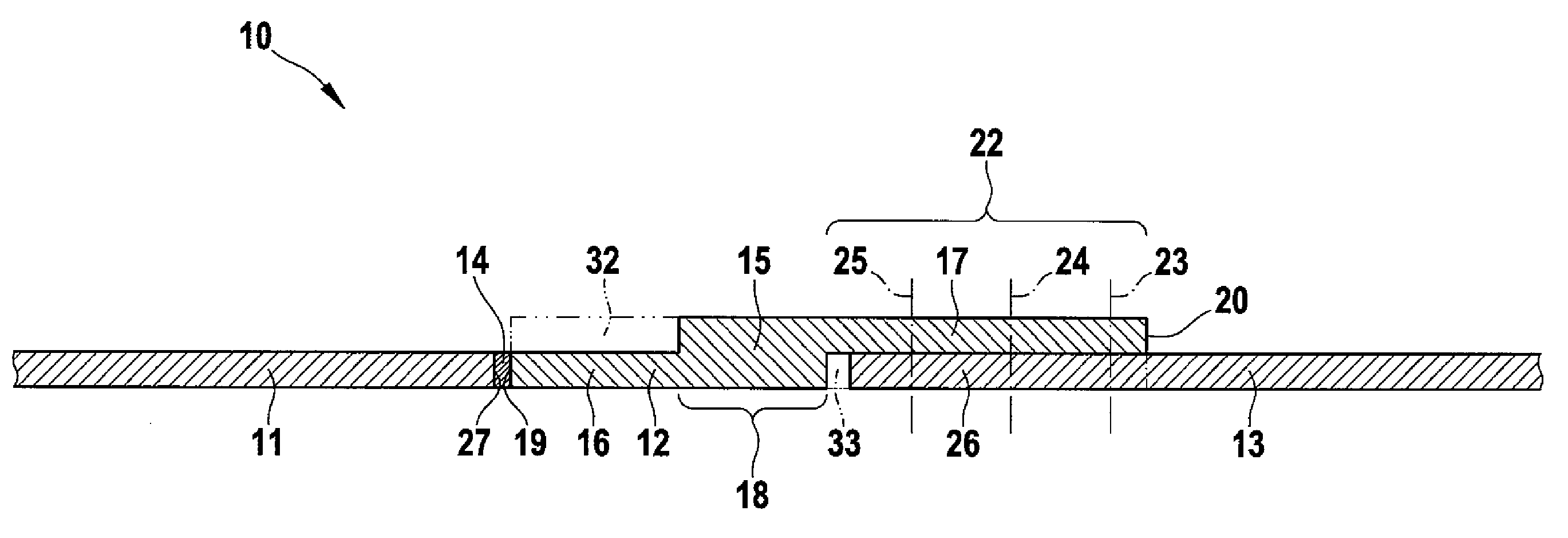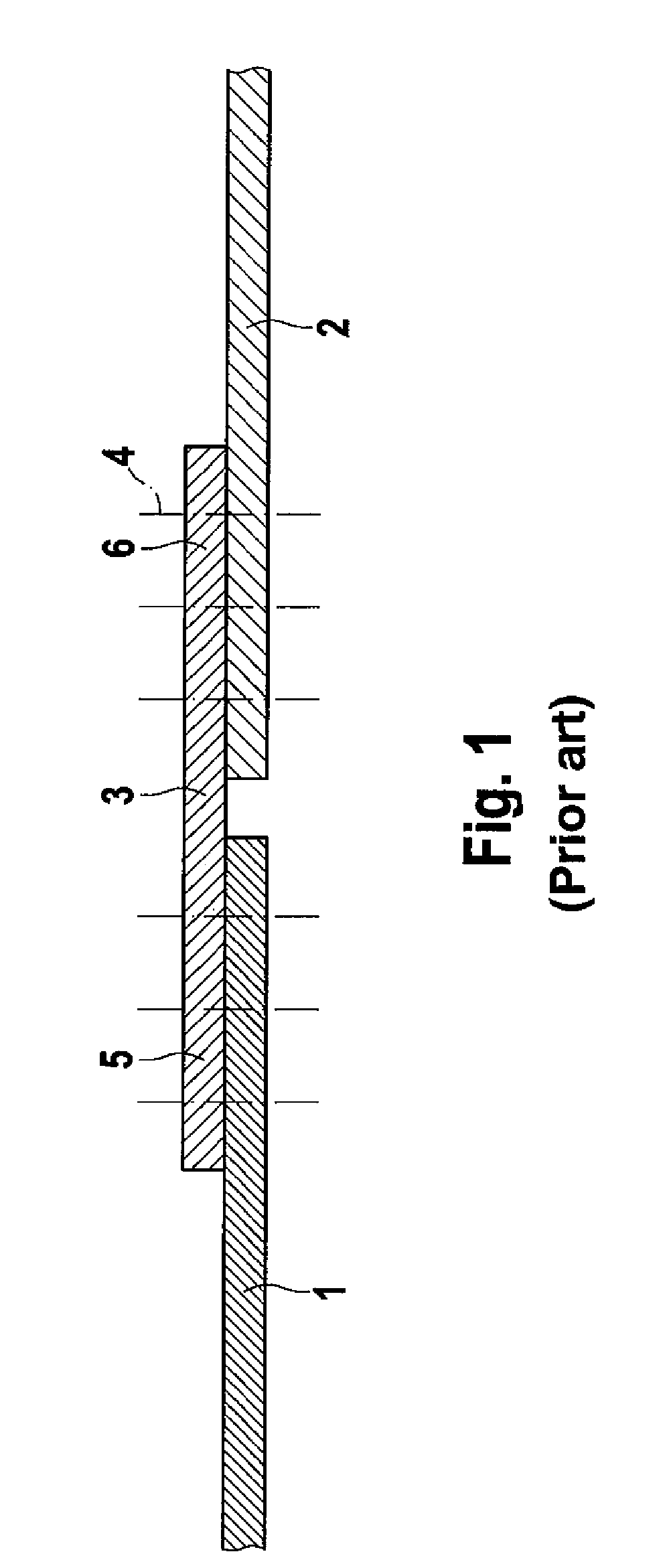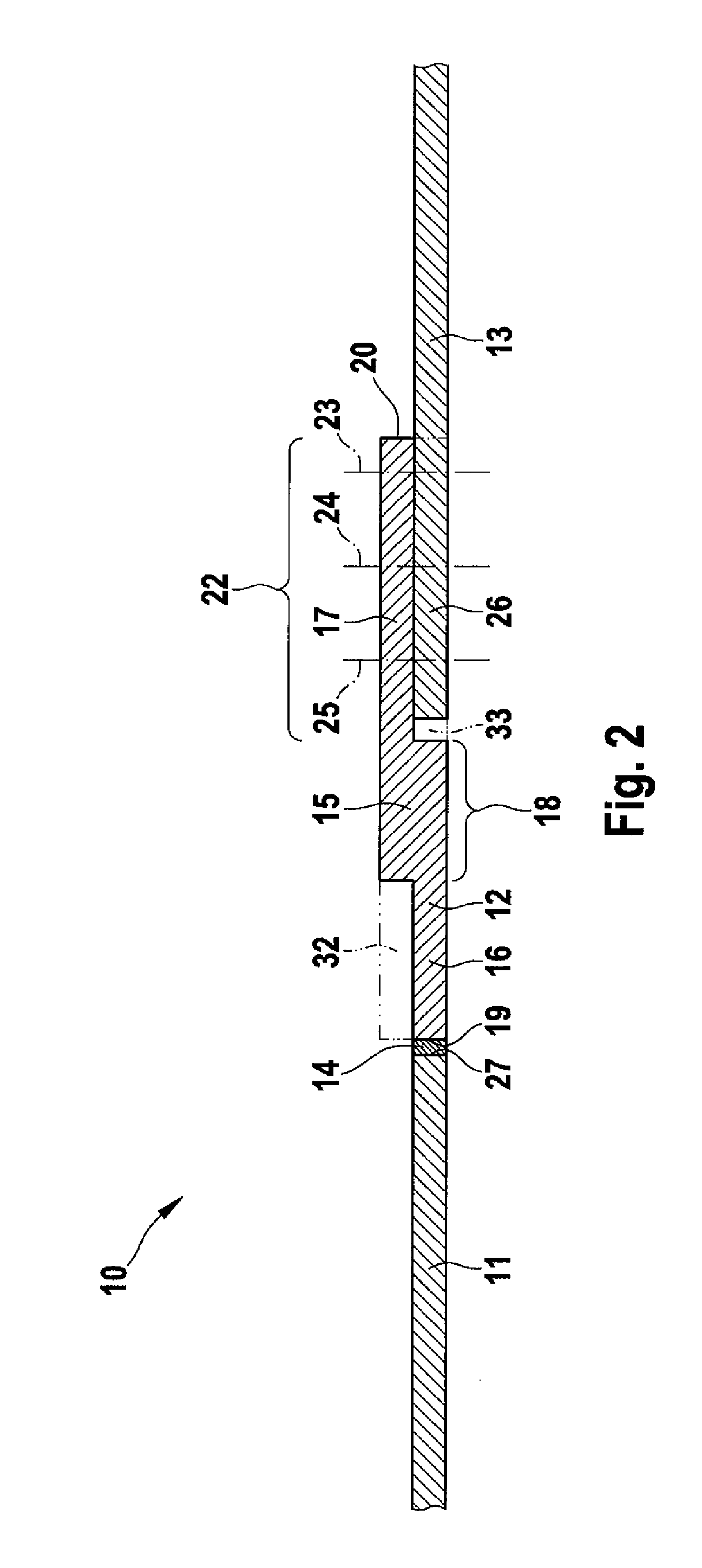Method for producing a composite skin in the field of aeronautics and astronautics
a technology of composite skins and skins, applied in the field of composite skins, can solve the problems of high production costs, and achieve the effect of reducing the weight of the aircraft and simply producing
- Summary
- Abstract
- Description
- Claims
- Application Information
AI Technical Summary
Benefits of technology
Problems solved by technology
Method used
Image
Examples
Embodiment Construction
[0024]The composite skin 10 comprises a skin plate 11, for example a first fuselage section, a butt plate 12 connected thereto with a substance-to-substance bond, and a further skin plate 13, for example a second fuselage section, which is fastened to the butt plate 12. The skin plate 11, the further skin plate 13 and the butt plate 12 are preferably produced from an aluminium alloy.
[0025]The butt plate 12 has a substantially Z-shaped cross-section 15 which is assembled from two parallel, substantially right-angled portions 16, 17 which overlap in a region 18 in the longitudinal direction. The reference numerals 19 and 20 refer to opposing ends of the butt plate 12.
[0026]The region of the butt plate 12 which is denoted with the reference numeral 22 forms the butt strap which is riveted to an end portion 26 of the further skin plate 13 by a plurality of, for example three rivet rows 23, 24, 25 which extend into the plane of the page of FIG. 2.
[0027]The skin plate 11 is connected to t...
PUM
| Property | Measurement | Unit |
|---|---|---|
| length | aaaaa | aaaaa |
| weight | aaaaa | aaaaa |
| structure | aaaaa | aaaaa |
Abstract
Description
Claims
Application Information
 Login to View More
Login to View More - R&D
- Intellectual Property
- Life Sciences
- Materials
- Tech Scout
- Unparalleled Data Quality
- Higher Quality Content
- 60% Fewer Hallucinations
Browse by: Latest US Patents, China's latest patents, Technical Efficacy Thesaurus, Application Domain, Technology Topic, Popular Technical Reports.
© 2025 PatSnap. All rights reserved.Legal|Privacy policy|Modern Slavery Act Transparency Statement|Sitemap|About US| Contact US: help@patsnap.com



